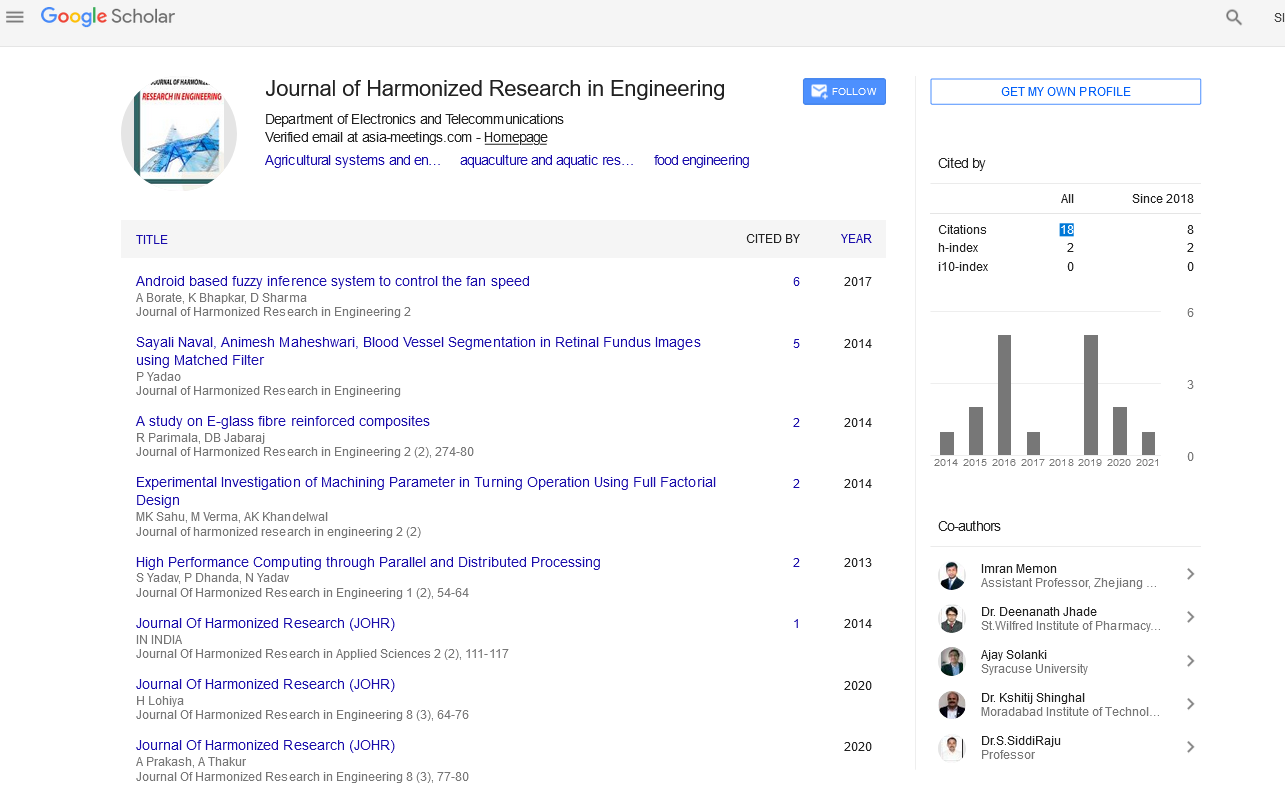Commentary Article - (2021) Volume 9, Issue 2
A SHORT NOTE ON BLOCK CHAIN TECHNOLOGY
Rudinsky Carlos*Received: Dec 06, 2021
Description
A blockchain is an increasing list of records, called blocks that are linked to each other using encryption. Each block contains the encryption hash, timestamp, and transaction data of the previous block. The timestamp proves that the transaction data was there when the block was exposed and entered the hash. Each block contains information about the previous block, so the blocks form a chain, and each additional block reinforces the previous block. Therefore, the blockchain is tolerant of data changes because the data in a particular block is recorded without changing all subsequent blocks and cannot be changed retroactively.
The blockchain is typically managed by a peer-topped network for use as a public distributed ledger, and the nodes collectively communicate according to the protocol to validate new blocks. Blockchain records are not immutable because they can be forked, but blockchain can be considered design-safe and is an example of Byzantine fault-tolerant distributed computing systems.
Blocks
The block contains a stack of valid transactions that have been hashed and encoded in the Merkle tree. Each block contains the cryptographic hash of the previous block on the blockchain and connects the two. The connected blocks form a chain. This iterative process verifies the integrity of the previous block down to the starting block, called the genesis block. Blocks are usually digitally signed to ensure the integrity of the block and the data it contains.
In some cases, you can create separate blocks at the same time to create a temporary fork. In addition to having a secure hash-based history, each blockchain has specific algorithms for evaluating different versions of the history, allowing you to choose one with a higher score than the other. Blocks that are not selected to be added to the chain are called isolated blocks. Peers that support databases sometimes have different versions of their history. They keep only the version of the database they know with the highest score. Each time the peer receives a higher rated version, the peer extends or overwrites its database and resends the improvements to the peer.
Block Time
In some cases, you can create separate blocks at the same time to create a temporary fork. In addition to having a secure hash-based history, each blockchain has specific algorithms for evaluating different versions of the history, allowing you to choose one with a higher score than the other. Blocks that are not selected to be added to the chain are called isolated blocks. Peers that support databases sometimes have different versions of their history. They keep only the version of the database they know with the highest score. Each time the peer receives a higher rated version, the peer extends or overwrites its database and resends the improvements to the peer.
Hard Forks
A hard fork is a rule change that the software that validates according to the old rule considers blocks created according to the new rule to be invalid. If a hard fork occurs, all nodes that should behave according to the new rules will need to update their software. Persistent splits can occur if one group of nodes continues to use the old software and the other node uses the new software.

Google Scholar citation report
Citations : 43
Journal of Harmonized Research in Engineering received 43 citations as per google scholar report









